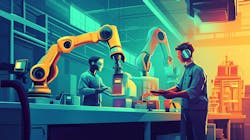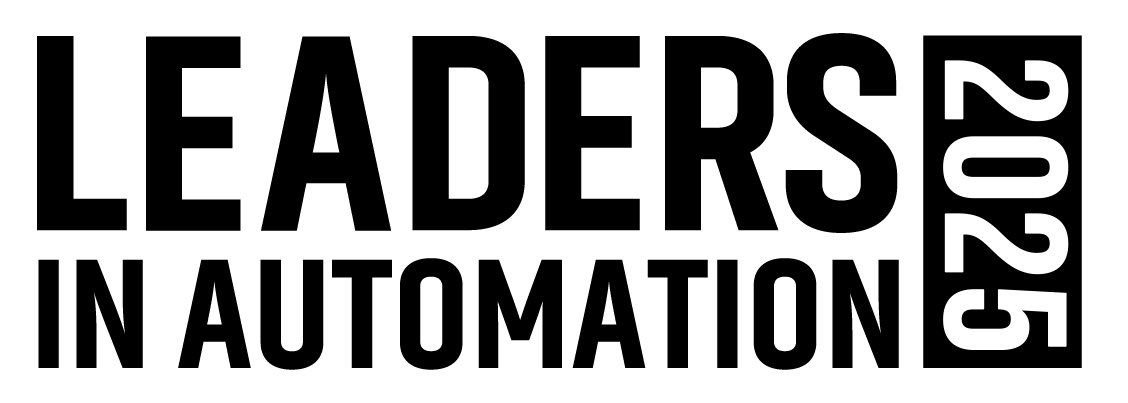The use of low-code software has been spreading rapidly throughout the manufacturing industries, allowing non-coding operators and engineers to develop apps to track asset performance, establish and track workflow procedures, and even program robots. To learn more about this, Automation World connected with Kristi Martindale (KM), chief commercial officer at Palladyne AI, a supplier of low-code AI platform software for robotics, for a recent episode of the Automation World Gets Your Question Answered podcast.
Following are a few highlights from the interview. Listen to the full podcast discussion.
AW: Can you walk us through what low-code software means for a shop floor operator or engineer as it relates to enabling them to develop robotic automation workflows.
KM: Palladyne AI’s process is very simple and allows for two different approaches. First, with low-code task training, we have a chatbot user interface where the user can input simplistic commands, such as pick this, place this, or send it here. This can be done by anyone on the shop floor. We've had people learn to operate the software and demonstrate it to their bosses in less than four hours. The second approach is what we call task-based training, where someone will perform the task to show the robot how it’s done. That task will be replicated and autonomized by our software. Essentially, it's demonstration-based training.
AW: Palladyne AI’s software platforms uses a closed-loop system to process data at the edge. Can you explain this and how it’s used to improve day-to-day manufacturing operations?
KM: What we mean by closed loop is that we’ve developed the full stack of functionality required to do robotic tasks from start to finish. It includes object detection, motion planning, collision avoidance, and the reasoning and learning for the system. It's really doing everything in a closed-loop fashion that you need to identify the object, determine what needs to be done with that object from an automation standpoint, execute the task, and then refine and learn to adjust if the environment changes so it can continue to complete the task it was trained to do.
A lot of AI-powered robotics systems out there are just doing one piece of this. For example, they might be doing object detection or motion planning, but ours is really looking at the full loop of all those functions and tying them together to complete the task and enable robots to do it autonomously.
The benefit of using edge-based processing here is that you eliminate any latency when you're sending information out to the cloud and waiting for that decision to come back. It's also lower cost because you're not incurring the costs associated with cloud services to do your compute. This is one of the things our customers tell us they really appreciate about edge-based computing, as well as the fact that it can be more secure since you're not sending data out into the cloud — it's all contained within their ecosystem and their environment.
AW: What technologies are used in your closed-loop system in terms of hardware and software?
KM: Our standard platform is the full closed-loop software package I described. In addition to that, users can deploy inexpensive or high-end cameras — we can integrate with any commercial off-the-shelf camera as a sensor point. And since the software is designed for use in a robotic environment, there will likely be end-effector hardware and force feedback mechanisms used. Our system can recognize and adapt to multiple types of sensor modalities.
AW: A major issue in manufacturing now is the need for process and system flexibility to deal with changing consumer requirements or custom demands. How does your software for robotics learn and adapt to things like new parts or new processes?
KM: One of the great things about our software is the ease of training it to do a task. One of the big areas of opportunity for this is in high-mix, low-volume manufacturing operations that have traditionally been difficult to automate because the cost of automation was too great — you had to hard-code the programming. With our software, you're able to easily train it on the part, on the environment in which it is operating, and on the task without any hard coding. It's very simple and straightforward and it enables companies to make changes very quickly to adapt to either a new part, a new workflow or a completely new environment.
AW: While the training timeline is obviously going to vary depending on how many parts or processes are changing, can you describe the typical time frame required to train the system when it comes to making changes?
KM: It's very quick. Often, the longest part is the computation time, but you can train the system on something new in 20 minutes. It's not something that takes days or weeks. Of course, it depends on what you're doing. If the system is being asked to ingest a totally new part, that maybe puts you into the 30-minute time frame because there's more computation that will be happening.
AW: You mentioned high-mix, low-volume manufacturing as a target area for this software, but are there other types of manufacturing applications that would benefit from this technology?
KM: End-of-line quality inspections are an area of opportunity. And one of the big applications we've been really digging into lately involves surface preparation and finishing tasks like sanding, grinding, and media blasting. This is a big area of potential for our software because the parts change often, but the manufacturers are not sanding through millions of pieces per month. They typically process hundreds a month.
AW: How should manufacturers approach the use of AI-enabled robotics software to ensure they'll get the kinds of results they're looking for and position themselves for incremental process improvements?
KM: We recently did a research paper with ABI about speeding time-to-value using AI-enabled robotic software for manufacturing, and they identified three best practices which we agree with.
First and foremost is identifying the core issue and pain point. What is that burning issue in your organization that you haven't been able to resolve through automation historically? I'm surprised at how many people are still doing certain tasks manually because they haven't been automated due to high mix variability.
The next step is to define the human's role in the feedback loop. You need to determine how the human stays in the loop. This is necessary because full stack computing enables such a high degree of system autonomy. You want to make sure that humans are monitoring the process and making sure the task is being completed as expected.
The third step is to start small — start in one area of your plant and then scale it across the group, or division before expanding more globally.


